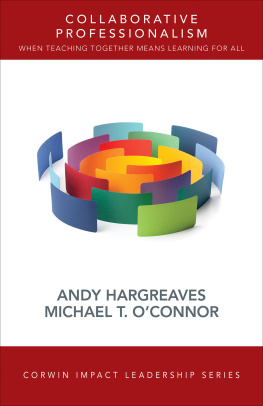

The child starting Kindergarten this fall will graduate in the third decade of the 21st century.
Every 29 seconds another student gives up in school, resulting in more than one million American high school students dropping out every year.
In the U.S. alone, more than 59 million students, teachers, and education employees spend part of their day in schools.
You cant expect children to learn 21st-century skills in schools built for the 1950s. We need schools designed for 21st-century success. Chad P. Wick, president and CEO, KnowledgeWorks Foundation
There are 97,382 public schools in the United States.

All we can know about the world she will step into is that it will have challenges and opportunities beyond what we can imagine today, problems and possibilities that will demand creativity and ingenuity, responsibility and compassion.
We are currently preparing students for jobs that dont yet exist, using technologies that havent yet been invented, in order to solve problems we dont even know are problems yet. Karl Fisch, educator
The world of children is imaginative play. Put two kids in the room together and all of a sudden theyll create something. Albert Cullum, educator
The average British childs height and build is very different than that of a child in the 1960s, which is the last time children were actually measured for determining measures of furniture. Dominic Savage, director, British Educational Suppliers Association
By 2013, spending on construction, renovation, and maintenance of U.S. schools is expected to total nearly $30 billion annually.
In 1998, the average public school building in the United States was 42 years old.
A Victorian teacher would get the hang of a modern school quite easily. Sean McDougall, educational thinker and designer
There are about 10 billion neurons in the brain and about 1,000 trillion connections. The possible combination of connections is about 10 to the one-millionth power. An enriched environment can contribute up to a 25% increase in the number of brain connections.

Whether this years kindergarten student will merely survive or positively thrive in the decades to come depends in large measure on the experiences she has in school.
An estimated 25,000 schools throughout America need major repair or outright replacement, and 60% of all schools report at least one major building feature that needs replacement or extensive repairs.
Asthma is the leading cause of absenteeism, responsible for more than 20 million missed schools days in the U.S. per year.
83% of German primary school children sit at a chair-desk combination unsuited for their body height.
More than one in ten U.S. high schools are Drop Out Factories where no more than 60% of students who start as freshman make it to their senior year.
One-third of German children between the ages of seven and 17 report getting headaches at school.
To me, its about recognizing that there is a much richer conception of intelligence and ability available to us than is promoted by conventional education. Sir Ken Robinson, creativity expert

Those experiences will be shaped by adults, by peers, and ultimately by places, by the physical environments where she does her learning.
The best teachers emphasize their ability to control classroom temperature as central to the performance of teachers and students.
Nearly half of all schools in the U.S. lack the basic electrical wiring to support computers, modems, and other communication technology.
In 2007, the public perception of schools in the U.S. was the lowest in recorded history.
Five percent of elementary school students in Canada report being bullied 10 or more times a month.
Our education system looks a lot like the U.S. auto industry in the 1970s, stuck in a flabby, inefficient, outdated production model. Michael Bloomberg, mayor of New York City

United in the conviction that environment is our childrens third teacher, we can begin anew a vital mission: designing todays schools for tomorrows world.
A study has shown that after installing an electromagnetic air cleaner in classrooms, absenteeism dropped from 8.3% to 3.7%. After the air purifier was removed, the rate jumped up to 7.9%.
U.S. national average for annual expenditures per student: $10,418.
What should schools look like when information is loose and available everywhere in ways that are personally relevant and streamlined to individual students? Renate Nummela Caine and Geoffrey Caine, education consultants
What we want to see is the child in pursuit of knowledge, and not knowledge in pursuit of the child. George Bernard Shaw, playwright
A child miseducated is a child lost. John F. Kennedy, former president of the United States
And when they look around and see that no one has lifted a finger to fix their school since the 19th century; when they are pushed out the door at the sound of the last bell is it any wonder they dont think their education is important? Barack Obama, president of the United States

FOREWORD:
DAVID W. ORR
Learning is far more complicated than once thought but also far simpler than commonly presumed. The complications arise because learning involves more than just school, curriculum, and test results. It is, rather, the result of the complex interplay between the childs body, diet, family life, security, neighborhood, teachers, school, peers, access to information, and a great deal more. But learning is also simpler than educators armed with the latest curricular materials and quantitative studies sometimes presume. Children will always learn. They learn early on by play. They learn on the streets and in classrooms, they learn from peers and from teachers. They learn from television and Internet and from books. Sometimes they learn things we wish they had not learned. They learn to compete or cooperate, fear or trust, join or isolate, but they will learn its in their genes.
Children will create as well. Whether order or disorder, chaos or harmony, beauty or ugliness, accord or violence, they will create. We all begin life with a will to leave a mark that no one else has left. Creativity, too, is in our genes.
Humans are particularly plastic, shaped by experiences early in life. Aldo Leopold, for example, began a half-century conversation about the human role in nature as a child playing in the marshes along the Mississippi River. Edward O. (Snake) Wilson began his lifelong love affair with animals as a child exploring nearby woods in Alabama. The stories are endless, but the point is the same. The best learning often occurs when children spend unplanned and uncounted hours outdoors investigating, experimenting, exploring, and playing which is to say spontaneously and delightfully designing their own curriculum. In the right circumstances, the result is a lifelong love affair with birds, bugs, fish, plants, trees, water, seashore, and landscapes, a love affair that is the foundation for an imaginative life rich in possibilities. I count it as one of the great tragedies of the modern world that sprawl and industrialization of landscapes have ruined many of the places that once nourished the minds, imagination, and souls of previous generations. Without much forethought or foresight we have designed a world convenient for commerce, speed, and violence, not one for children. As a consequence, most children grow up in the sterile world of freeways, concrete, steel, suburbs, shopping malls, television, iPods, and computer screens. The sum total of that is told in statistics about poverty, hunger, the spread of preventable disease, loneliness, and by the relentless numbers describing species loss, soil erosion, carbon in the atmosphere. Had we loved our children better, we would not have done so much so carelessly.
Next page
![O’Donnell Wicklund Pigozzi and Peterson The third teacher 79 ways you can use design to transform teaching & learning ; [a collaborative project]](/uploads/posts/book/113910/thumbs/o-donnell-wicklund-pigozzi-and-peterson-the.jpg)













